In mid to late summer in the northeastern US, several species of large solitary wasp (belonging to the families Sphecidae and Crabronidae) frequent gardens, parks, and other open spaces. Despite their threatening appearance, solitary wasps are totally harmless. They are more interested in hunting other invertebrates–like spiders, flies, and bees–than they are in you. Solitary wasps are carnivores that capture and paralyze insects or spiders to feed their young, with many species specializing on particular types of prey. Unlike hornets, yellowjackets, and other social wasps, solitary wasp females build and provision nests independently of one another. Nesting locations differ among species and may include a variety of cavities both above and below ground.
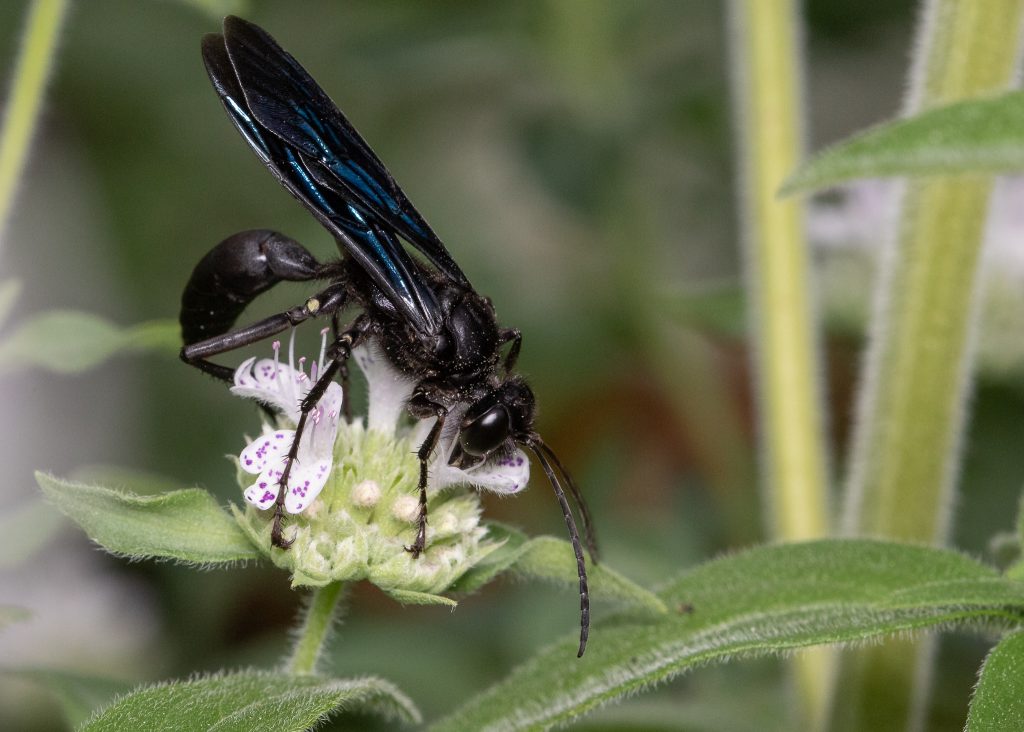
Digger wasps in the genus Sphex nest in the ground. In the northeast, the Great Golden Digger Wasp (Sphex ichnumoneus) and Great Black Wasp (Sphex pensylvanicus) are two particularly common species that can be seen drinking nectar from milkweeds, mountain mints, and other flowers. Females hunt katydids, stinging and paralyzing their prey before dragging it back to the nest. Although they are solitary, digger wasps sometimes aggregate, with many females constructing nests in close proximity. Each nest consists of a main tunnel with a number of side tunnels, each of which ends in a brood cell in which an egg is laid after the cell is provisioned with several katydids. When bringing paralyzed prey back to the nest, female Sphex leave the prey item outside the nest entrance while investigating the nest interior before dragging the prey down. If the prey item is moved slightly, the wasp will retrieve it and inspect the nest yet again. Sphex’s automatic nest-checking routine has captured the attention of several philosophers interested in the contrasting ideas of instinct and free will, inspiring the coining of the word “sphexish” (used to describe actions that appear thought-out and deliberate but are instead actually quite mindless).
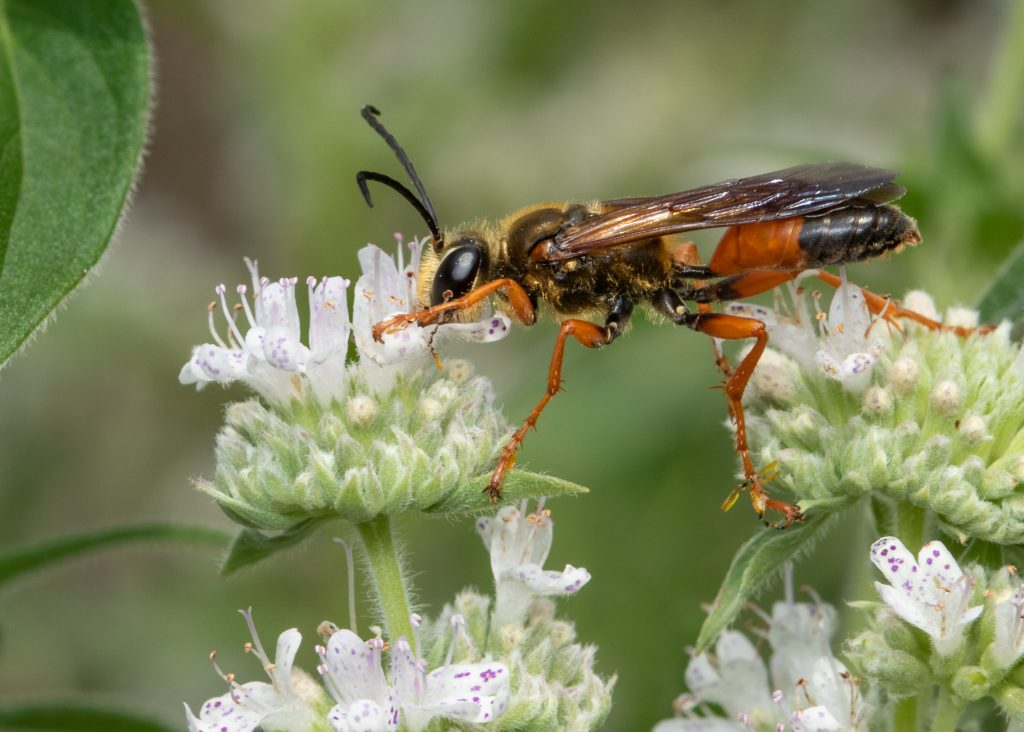
Isodontia grass-carrying wasps are a common sight around houses, gathering dry blades of grass and stuffing them into a crevice to furnish a nest. Grass-carrying wasps are predators of katydids and tree crickets and, like the digger wasps, leave their prey alive, but paralyzed, for their larvae to feed on.
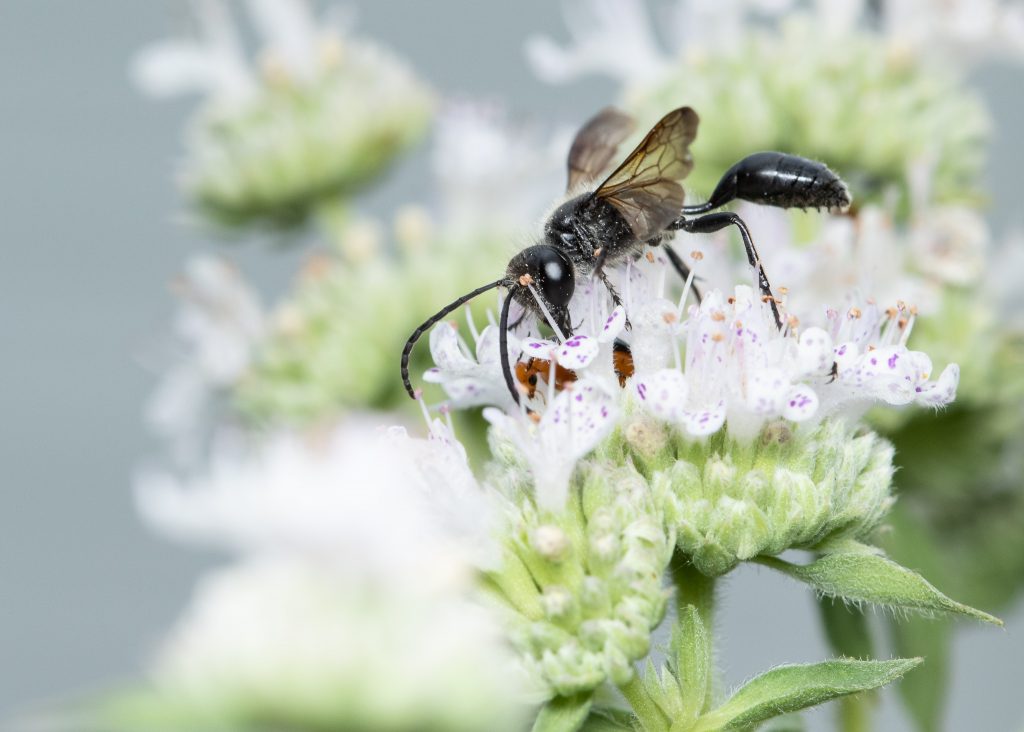
The giant cicada killer wasps (Sphecius sp.) are hard not to notice. Reaching lengths of an inch or more, these are among the largest wasps in North America. Even so, these formidable-looking insects are typically harmless. Females are not aggressive and although males may behave aggressively, they are unable to sting. Cicada killers sometimes form nesting aggregations, with many females utilizing the same patch of bare soil while males hover about looking for opportunities to mate. As their common name suggests, cicada killers hunt cicadas, paralyzing them and then flying back to their nest while carrying a prey item heavier than themselves. The wasp larva consumes the cicada and emerges as an adult the following summer.
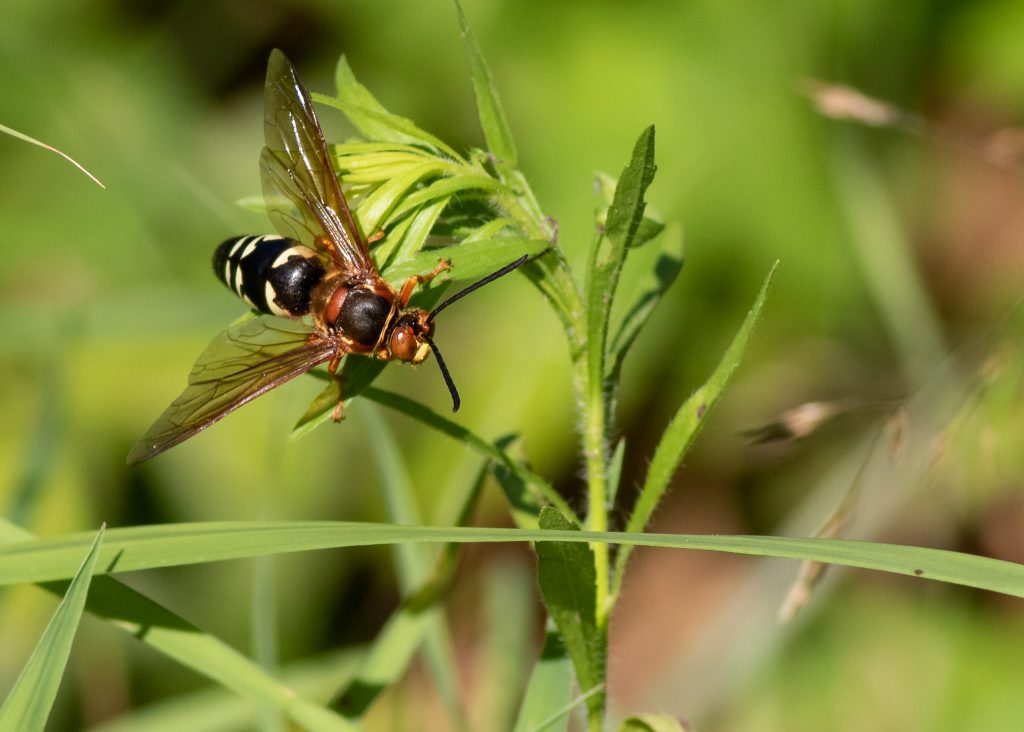
Other solitary wasps hunt soft-bodied prey. The thread-waisted wasps in the genus Ammophila are a group of impossibly-skinny caterpillar predators. They can often be seen flying with a caterpillar slung underneath their body, toting their paralyzed prey back to an underground nest. Interestingly, after completing their nests and filling the tunnel with sand, some thread-waisted wasps have been observed using a small stone held between their jaws to tamp down soil at the former nest entrance, a behavior sometimes considered to be an example of tool use!
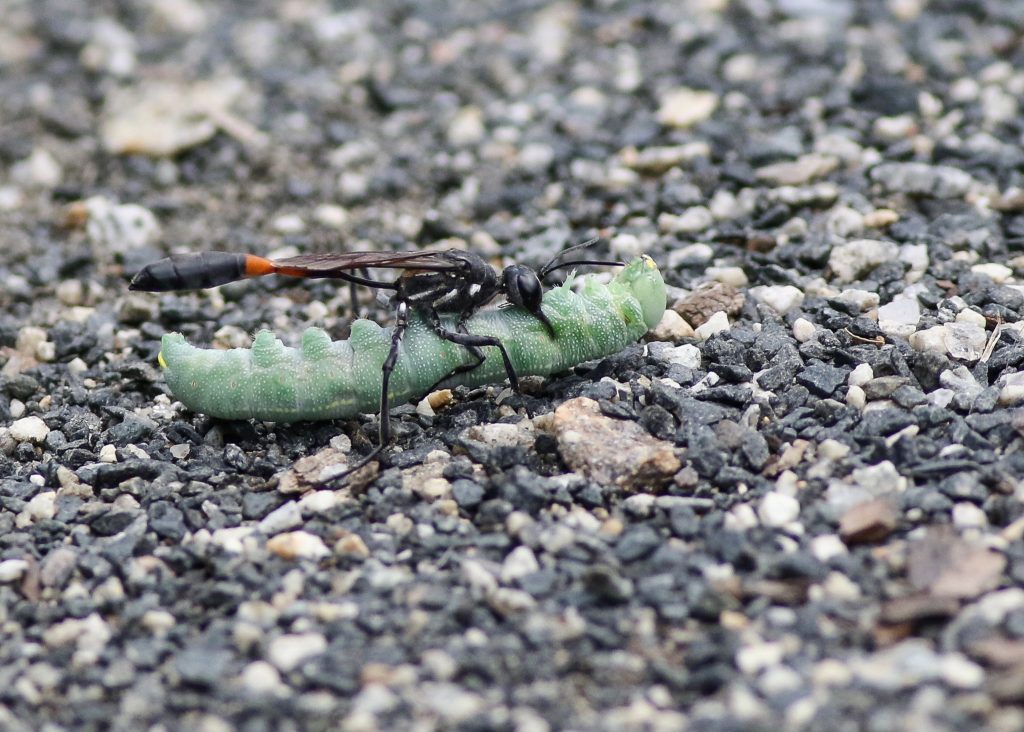
Though they may lack the charisma of butterflies, bees, and other favorite garden insects, solitary wasps are a diverse group that play an essential part in regulating numbers of herbivorous insects. By leaving patches of bare soil for nesting and planting milkweeds (Asclepias sp.), mountain mints (Pycnanthemum sp.), joe-pye weeds (Eupatorium sp.) , and other favorite nectar plants, you can encourage the presence of these beneficial insects in your yard and enjoy their pest-control services and enthralling behaviors.
Photo Credits: Max McCarthy

